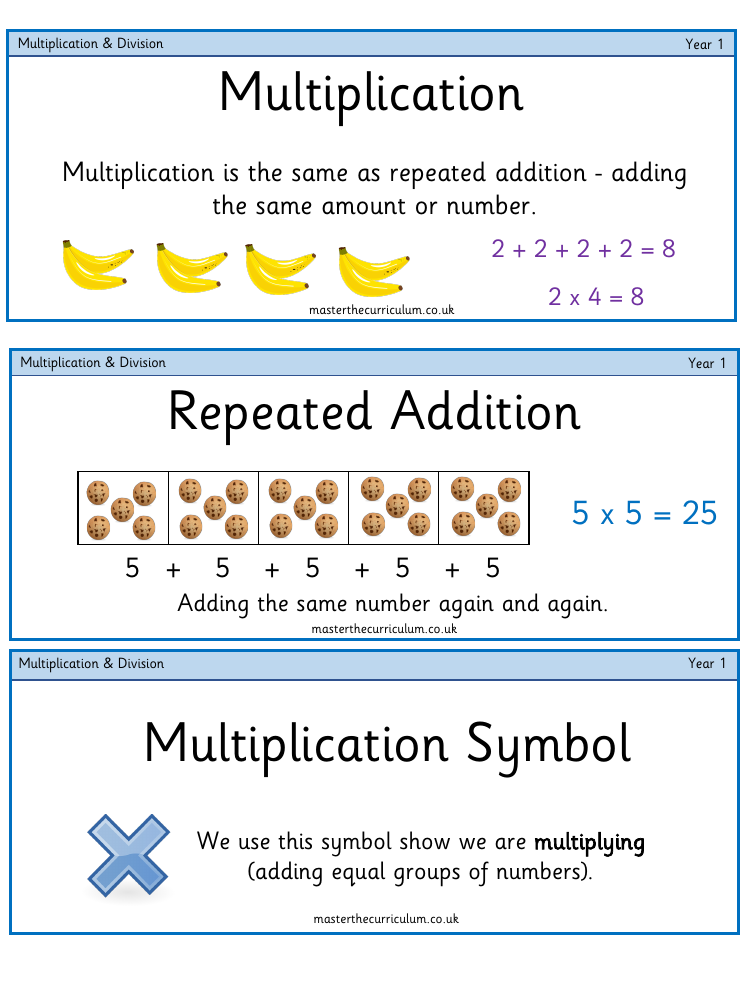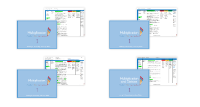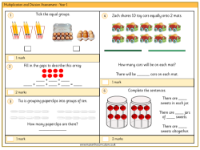Multiplication and division - Vocabulary

Maths Resource Description
Multiplication in Year 1 is introduced as repeated addition, which is the concept of adding the same number multiple times. For instance, the sum 5 + 5 + 5 + 5 + 5 can be expressed as 5 times 5, or 5 x 5, which equals 25. This fundamental principle is conveyed using the multiplication symbol, which signifies the operation of adding equal groups of numbers. Children learn to visualise this process through practical examples, such as seeing 2 added together 6 times, which can also be written as 2 x 6, resulting in 12. The term 'equal' is used to describe the same amount, whether in reference to objects or groups, ensuring that students understand the uniformity required in multiplication.
The lesson extends to the concept of 'lots of', which helps students form repeated addition or multiplication sentences, such as 3 lots of 10 equalling 30. Arrays, which are objects arranged in rows and columns, serve as visual aids to reinforce the multiplication process, exemplified by 5 x 3 being shown as three groups of five. Additionally, students learn about 'doubles'—having two of the same number or group—and division, which involves splitting a number into equal parts or groups. For example, dividing 6 by 2 results in 3, as it creates two equal groups of 3. The division symbol is introduced to represent this operation. The vocabulary covered also includes terms like 'multiples', 'sharing', 'grouping', and the concept of 'total', which asks students to find the sum of all parts, further solidifying their understanding of multiplication and division.


